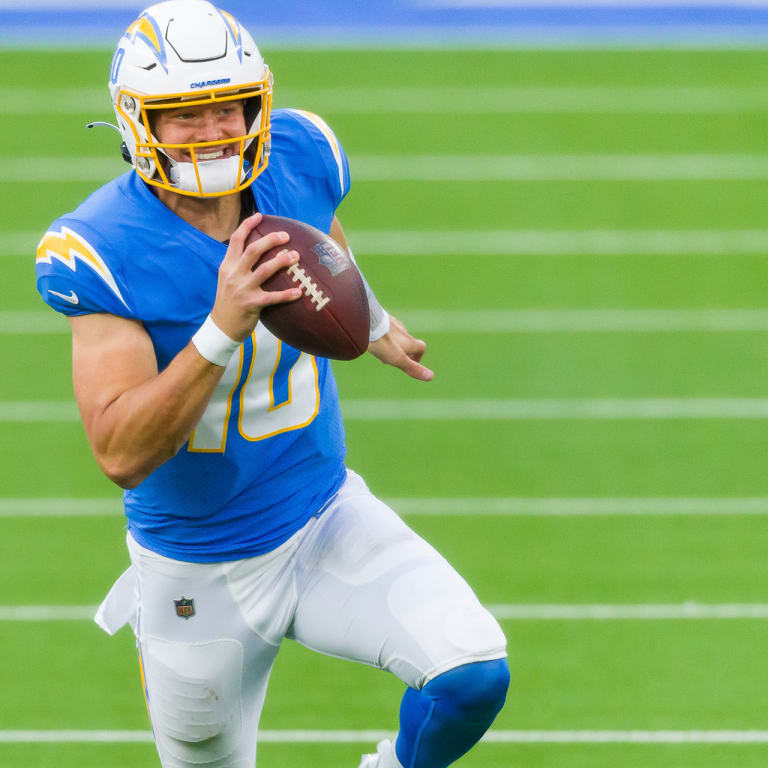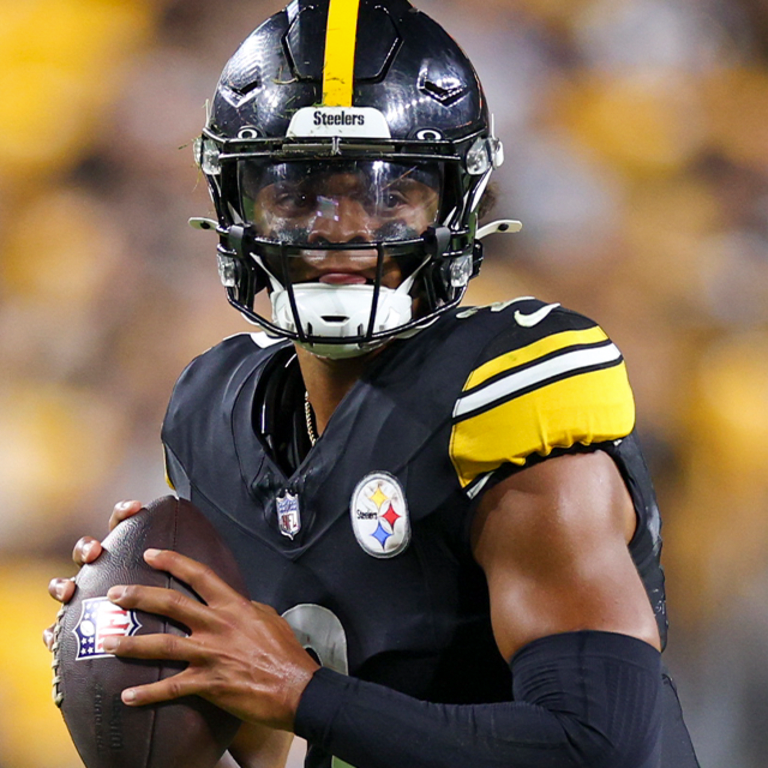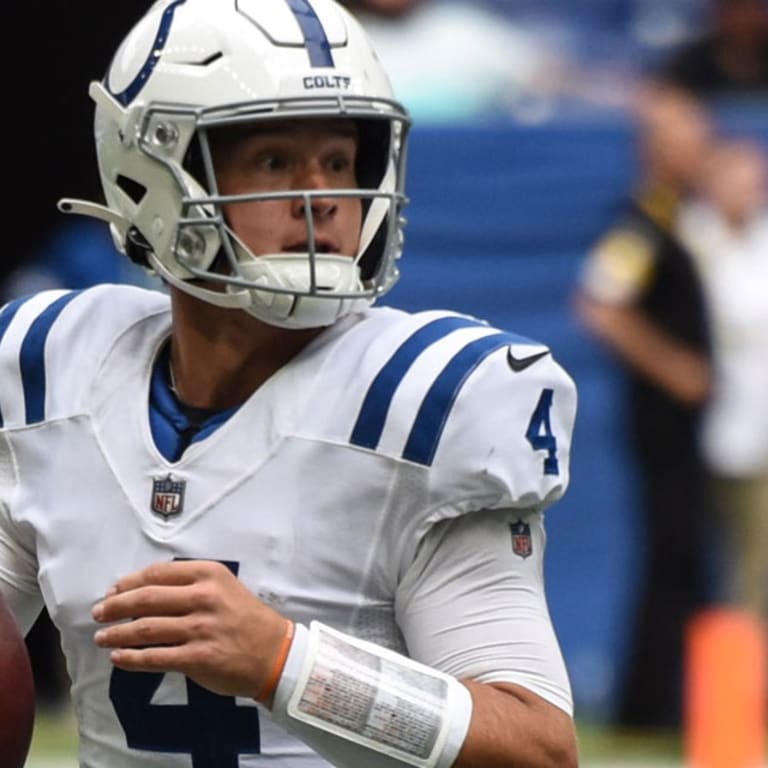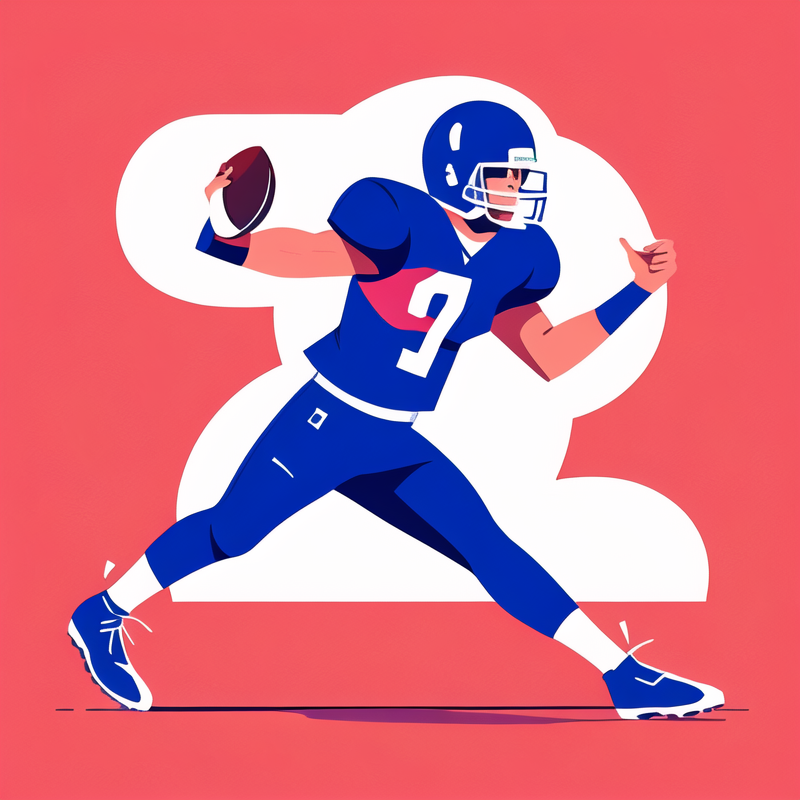The Basics of the Quarterback Position
What is a quarterback in football? To understand what a quarterback in football is, it’s essential to grasp the basics of the position. The quarterback, often abbreviated as ‘QB,’ is the leader of the offensive team. They are the players who dictate the game’s pace and call the plays on the field. This critical role requires a unique blend of physical prowess and strategic thinking.

At the start of each play, the quarterback receives the ball from the center through a process known as the snap. From there, a quarterback has multiple options. They can throw the ball to a receiver, hand it off to a running back, or even run with it themselves. The decision a quarterback makes in these moments can change the course of the game.
Another aspect of being a quarterback is reading the defense. Prior to the snap, a quarterback will assess the alignment and disposition of the opposing team’s defenders. This quick analysis is crucial to identify any potential weaknesses or predict defensive strategies, which influences play selection.
Lastly, quarterbacks must have a strong and accurate throwing arm. Throwing power and precision are necessary to reach receivers at varying distances and to avoid interceptions by the defense. The ability to consistently complete passes is a fundamental requirement for any successful quarterback.
Understanding the quarterback position sets the stage for recognizing their larger role in the game, both as a player and a team leader. Their responsibilities extend beyond the physical acts of passing or running with the ball and touch on the intellectual and strategic aspects of football.
Responsibilities of a Quarterback
The responsibilities of a quarterback in football go far beyond throwing the ball. They serve as the team’s on-field commander, making critical decisions that affect the outcome of each play. Here’s a breakdown of a quarterback’s key responsibilities:
- Play Calling: Quarterbacks are often involved in selecting the plays the offense will run. They work closely with the coaching staff to develop a game plan suited to their strengths and the opponents’ weaknesses.
- Ball Handling: Whether it’s handing the ball to a running back or executing a perfect spiral pass to a receiver, precise ball handling is essential. A successful quarterback must execute these actions with accuracy and timing.
- Reading Defenses: One of the cerebral aspects of being a quarterback is analyzing and understanding defensive formations. A quarterback must identify blitzes or coverage changes before the snap to adjust the play accordingly.
- Leadership: As the leader of the offense, the quarterback sets the tone for the team’s morale and performance. They need to display confidence, rallying the team during challenging times and maintaining composure under pressure.
- Time Management: Managing the clock is yet another duty. It involves making tactical decisions such as when to run out of bounds to stop the clock, or when to stay in bounds to keep it running.
- Communication: Clear and precise communication with coaches, the offensive line, and receivers is necessary to ensure everyone is on the same page for each play.
- Mobility: In cases where the play breaks down or the defense penetrates the line, a quarterback must be agile enough to evade defenders and prolong the play either by running or finding an open receiver.
In these various ways, the quarterback not only executes plays but shapes the game’s strategic direction. Their role is a blend of tactical knowledge, technical skill, and leadership qualities that together form the backbone of any football team’s offense.
Quarterback Leadership and Team Dynamics
Leadership is a vital trait for a quarterback in football. They must inspire and guide the team. A quarterback stands as more than just a player; they are a central figure in crafting team spirit and unity. They often set the tone in high-pressure moments. Their confidence can lift the team’s morale, and command can steer players towards success.
Good quarterbacks show composure. They stay calm under pressure and make smart choices. A huddle is where quarterbacks galvanize their team. They relay the coach’s strategy and ensure everyone knows their role. This clarity is crucial to avoid mistakes on the field.
A quarterback’s bond with the team is built on trust. Players look to their quarterback to be reliable and consistent. A quarterback demonstrates trust by being accountable for their actions and decisions. They must also trust their teammates to do their parts.
Communication skills are critical in this role. Quarterbacks must convey plays clearly and concisely. They need an understanding of each player’s responsibilities and the entire team’s goals. Developing a good rapport with the receivers can lead to more successful plays.
In team dynamics, quarterbacks are like the connecting thread. They bring together the coaches’ plans and the players’ execution. They must understand each teammate’s skills and how best to use them. This knowledge guides their decisions for play-calling and adjusting tactics during the game.
In summary, a quarterback embodies leadership, unity, trust, and communication. They shape the game’s mental and emotional atmosphere. Through their leadership, quarterbacks can turn a group of players into a cohesive, formidable team.

Physical and Mental Skill Sets for a Quarterback
The success of a quarterback hinges on a duo of skill sets: physical and mental. Here’s a glimpse into what these entail:
- Physical Prowess: A quarterback must possess a strong arm to make long, accurate throws. Agility is also key, allowing them to evade defenders and sometimes rush the ball themselves. They need excellent hand-eye coordination for precise ball handling and to connect swiftly with receivers.
- Mental Sharpness: Football is a game of strategy and quick decisions. A quarterback’s mind must be razor-sharp, capable of reading defenses in an instant and making the right call. They need to memorize complex playbooks and adjust tactics on the fly. Mental resilience is crucial for bouncing back from setbacks without losing focus.
- Vision and Awareness: Quarterbacks need to observe the whole field, watching for open receivers while also being aware of the defense’s movements. They must anticipate how a play might unfold even before the snap.
- Leadership and Composure: Beyond physical and mental abilities, quarterbacks require the confidence to lead. They should remain composed under immense pressure and inspire their teammates to remain focused and execute the plays.
- Preparation and Study: This involves analyzing game film, studying opponents, and mastering the playbooks. A deep understanding of the game’s intricacies is as important as physical training.
With these abilities, quarterbacks navigate the challenges of each game, driving their teams toward victory. Their development in these areas is ongoing, honed through experience, practice, and a commitment to excellence on and off the field.
Training and Preparation for Quarterbacks
In the world of football, training and preparation are crucial for the success of a quarterback. This section delves into the routines and techniques that quarterbacks use to be game-ready.
- Physical Conditioning: Quarterbacks must maintain top physical shape. They follow rigorous workout routines, focusing on both strength and cardio. Balance and flexibility are also worked on to avoid injuries and to improve mobility.
- Technical Drills: To hone their throwing and ball-handling skills, quarterbacks practice a variety of drills. Repetitions of these drills help improve accuracy, speed, and timing.
- Mental Rehearsals: Mental preparation is just as important. Quarterbacks study playbooks extensively. They visualize different scenarios and how they would react to them.
- Film Study: Watching past game footage helps quarterbacks learn from mistakes. They study opponents’ defenses to anticipate their strategies.
- Practice Games: Scrimmages simulate real game situations. These practice sessions are where quarterbacks test their skills and make necessary adjustments.
- Nutrition and Rest: A healthy diet fuels a quarterback’s performance. Adequate sleep is equally essential to ensure they are mentally and physically ready for game day.
- Teamwork and Communication: Building a strong connection with the team is done through continuous communication, both on and off the field. This helps in synchronizing strategies and play execution.
- Coaching Sessions: Regular meetings with coaches allow for personalized guidance and feedback. These sessions focus on improving tactics and fixing errors.
With dedication to these elements of training and preparation, quarterbacks can enhance their game performance and decision-making abilities. The outcome of a football game often is dependent on their preparedness and ability to implement strategies effectively.

Evolution of the Quarterback Role in Football History
The quarterback position has evolved greatly over the history of football. Initially, football was a ground-and-pound game, focused on running. Back then, quarterbacks’ main job was to hand off the ball to running backs. But as the sport evolved, so did the quarterback role. Here’s a brief look at the evolution:
- Early Days: In the early 20th century, quarterbacks were more like field generals. They called plays but rarely threw the ball. This was partly due to the heavier, less aerodynamic shape of footballs at the time.
- Passing Era: As the forward pass became more popular and rules changed, the quarterback’s role shifted. They began to throw more, and the position required more skill and strategy.
- Modern Football: Today’s quarterbacks are at the center of the offense. They make quick decisions, call audibles at the line, and need a deep understanding of the entire game plan. They are the stars that teams build around.
- Athleticism and Precision: The modern quarterback must have both athleticism and precision. They are expected to not just manage the game, but to change it with their arm strength and accuracy.
- Strategic Thinkers: Football has become more complex. A quarterback must now master intricacies within an extensive playbook, understand opposing defenses, and often call plays with little input from the sidelines.
This evolution reflects a shift in importance. The quarterback has gone from a supporting leader to the main attraction on the football field. The role continues to change as strategies and game plans become even more sophisticated.
Famous Quarterbacks and Their Impact on the Game
The legacy of a quarterback in football often transcends the field. Some quarterbacks become legends, known for their game-changing plays and leadership that lead teams to victory. Here, we discuss quarterbacks who’ve left an indelible mark on the game.
- Record Breakers: The record books are filled with quarterbacks who have achieved staggering career stats. Touchdowns, passing yards, and completions measure their prowess.
- Winning Leaders: Quarterbacks with multiple Super Bowl rings or championship titles are often hailed as the greatest. They consistently guide their teams through tough games.
- Trendsetters: Some quarterbacks are famous for revolutionizing the position or the game itself. Their unique style of play often inspires new strategies.
- Charismatic Icons: The face of a franchise, these quarterbacks are also public figures that draw fans to the sport. Their charisma and appeal extend beyond their athletic talent.
- Community Champions: Off the field, many quarterbacks engage in charitable work, becoming role models and impacting lives in their communities.
Each one of these quarterbacks embodies the essence of what a quarterback in football is, showcasing not just the physical and mental skills discussed earlier, but also the influence a player can hold as a leader and a public figure.
Understanding Quarterback Ratings and Statistics
In football, quarterback ratings and statistics offer insight into a player’s performance. These metrics are critical in evaluating quarterbacks. Let’s dive into some core stats and what they represent:
- Passer Rating: A complex formula that reflects a quarterback’s passing efficiency. It takes into account completions, yards, touchdowns, and interceptions.
- Completion Percentage: This shows the accuracy of a quarterback. It is the number of completed passes divided by the total attempted.
- Yards per Attempt: It measures the distance thrown per pass attempt. Higher values suggest a more aggressive, downfield attack.
- Touchdown-to-Interception Ratio: A key indicator of decision-making. It compares the number of touchdown passes to interceptions thrown.
- Quarterback Wins: Wins tied to a quarterback, though debated in value. Football is a team sport, so this stat can be misguiding.
- Total Quarterback Rating (QBR): An ESPN metric. It assesses all of a quarterback’s contributions to winning a game, including running the ball and plays under pressure.
- 4th Quarter Comebacks/Game-Winning Drives: A stat showing a quarterback’s performance in clutch situations. It’s a count of the times a quarterback has rescued a losing game in the final moments.
Analysts and fans often use these stats for comparisons. Great quarterbacks excel in many of these areas. Such metrics help fans understand what makes a quarterback stand out. But remember, numbers don’t capture everything. Leadership, ability to inspire the team, and clutch performance count too. They define a quarterback’s true value beyond the raw data.
